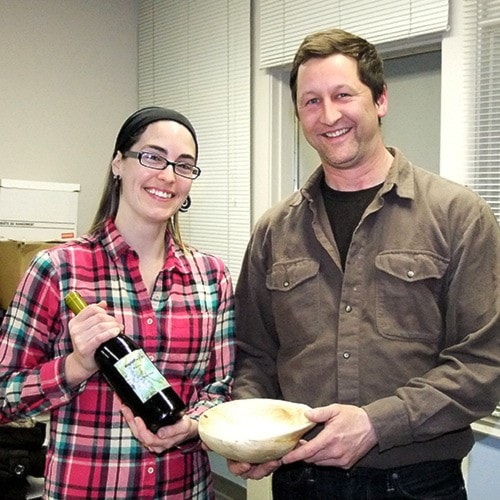Residents of the North Thompson Valley are flexible and inventive in finding ways around barriers to harvesting non-timber forest resources.
They also work together informally to manage those resources using their own local and/or traditional knowledge.
Those were two of the findings from her research that Simon Fraser University graduate student Samantha Charlton presented during a public meeting held Thursday evening at the Community Resource Center in Clearwater. Over two dozen people, many of whom Charlton had interviewed for her research, attended the event.
During her research, Charlton sought to identify what are the challenges and opportunities for the harvest of non-timber forest resources in the North Thompson Valley.
Non-timber forest resources are things like berries, mushrooms, teas, cedar boughs and other useful items that can be obtained from the forest, as opposed to logs and timber.
The SFU research was interested in how the resource could be co-managed, which means sharing power and responsibilities between the state and local resource users with regards to the allocation and use of resources.
The first step in her research was to review the literature, she said. One of the interesting statistics she found was that the non-timber forest resource industry in Canada has a value in excess of $1 billion per year.
NTFR are an example of a common pool resource, she said. That means it is subtractable – if someone takes something, then it isn’t available to someone else, and it is difficult to exclude competing users.
First Nations have constitutional and historic rights to many NTFR, but there is a lack of an existing legal framework.
Commercial NTFR being collected in this region include wreaths, Christmas trees, spruce bud syrup, cedar branches (for oil), pine mushrooms and morels.
People need to be flexible, she said, because the supplies and markets are both highly variable.
NTFR that local residents feel might be threatened include Labrador tea, devil’s club, huckleberries, lilies (such as glacier and tiger lilies), and some types of mushrooms.
Some see the use of permits or exclusive areas as necessary to protect species threatened by harvesting. On the other hand, the slim profit margins mean there should be minimum bureaucracy to deal with.
Community forests have the legislative right to manage and make decisions regarding NTFR. However, there needs to be consultation with First Nations.
She saw the community forest’s role as building relationships with First Nations, raising awareness and education among the general public, and researching the NTFR, including species, yield, quality and regeneration.
All log harvesting should be done with NTFR in mind.
Wells Gray Community Forest has sponsored several symposiums or workshops on NTFR. Charlton thought these should continue, hopefully on an annual basis.
